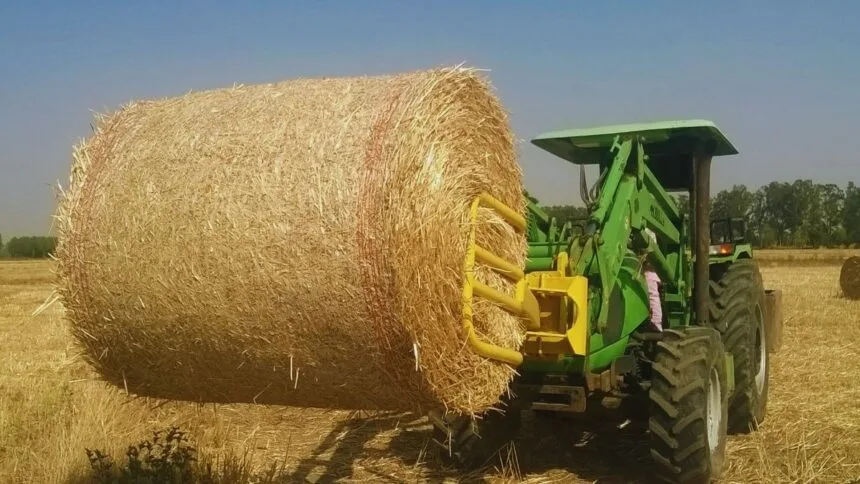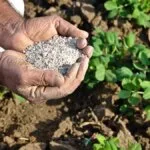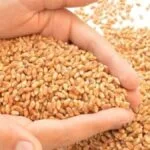Main Points In Hindi (मुख्य बातें – हिंदी में)
- कद्दू जलाने (stubble burning) पर सख्ती: योगी सरकार की सख्त नीतियों और किसानों को प्रोत्साहित करने के प्रयासों के फलस्वरूप, कद्दू जलाने की घटनाओं में 46 प्रतिशत की कमी आई है, जो 2017 में 8784 से घटकर 2023 में 3996 तक पहुँची है।
- जैव विघटनकारी का वितरण: सरकार खेतों में कद्दू को कम्पोस्ट करने के लिए 7.5 जैव विघटनकारी की बोतलें प्रदान कर रही है, जिससे एक एकड़ के कद्दू को कम्पोस्ट में बदला जा सकता है।
- किसानों को जागरूकता: किसानों को कद्दू जलाने के हानिकारक प्रभाव और कम्पोस्ट बनाने के फायदों के बारे में जागरूक किया जा रहा है, जिससे काम की लागत की बचत होती है और लाभ बढ़ता है।
- सूचना और निरीक्षण: योगी सरकार ने फसल कटाई के दौरान राजस्व कर्मचारियों को अन्य कार्यों में न लगाने के निर्देश दिए हैं, ताकि फसल कटाई उचित तथा समय पर हो सके।
- फसल बीमा के तहत सेमिनार: केंद्र सरकार के निर्देशों के अनुसार, फसल कटाई का 100 प्रतिशत कार्य CCE कृषि ऐप के माध्यम से लागू किया जा रहा है, जिससे कृषकों को बीमा के तहत फसल की सही जानकारी मिल सके।
Main Points In English(मुख्य बातें – अंग्रेज़ी में)
Here are the main points regarding the Yogi government’s policy to combat stubble burning:
- Reduction in Stubble Burning Incidents: The Yogi government has successfully reduced incidents of stubble burning by about 46% over seven years, decreasing from 8,784 cases in 2017 to 3,996 cases in 2023. This success is attributed to effective farmer education about the harms of burning and the benefits of alternatives like composting and direct sowing.
- Introduction of Bio Decomposers: The government is providing bio decomposers, allowing farmers to compost stubble directly in their fields. One decomposer bottle can process the stubble on one acre, which enhances soil quality and fertility, ultimately saving costs on fertilizers for future crops.
- Nutrient Preservation through Composting: Burning stubble destroys essential nutrients like nitrogen, phosphorus, and potash (NPK), as well as beneficial soil microorganisms. Composting stubble instead can help maintain soil health and reduce fertilizer costs by about 25% for subsequent crops.
- Guidelines for Revenue Personnel: The Yogi government has issued orders to ensure that revenue personnel focus solely on their duties during the Kharif crop harvest. In special cases, any diversion from their responsibilities must be justified. This aims to improve oversight and accountability in crop management.
- Crop Cutting and Insurance Implementation: There are mandatory inspections and tests for harvesting processes, following the implementation of the CCE Agri App for crop cutting. This app has been in use since Kharif 2022 to ensure accurate yield assessments and monitoring for crops covered under insurance.
Complete News In Hindi(पूरी खबर – हिंदी में)
योगी सरकार की कड़ी नीति और प्रोत्साहन के कारण भ्रष्ट्र जलाने की समस्या में कमी आ रही है। वास्तव में, योगी सरकार किसानों को यह समझाने में सफल हो रही है कि भूसे को जलाने से क्या हानि होती है और इसके बजाय खाद बनाने और बिना जुताई के बीज डालने के लाभ क्या हैं। राज्य सरकार की नीतियों के कारण, पिछले सात सालों में भूसे के जलाने की घटनाएं लगभग 46 प्रतिशत कम हुई हैं। 2017 में 8784 मामलों की रिपोर्ट हुई थी, जो 2023 में 3996 पर आ गई है। इस मौसम में भी किसानों को जागरूक किया जा रहा है।
सरकार बायो डीकंपोजर दे रही है
सरकार खेतों में भूसे को खाद बनाने के लिए 7.5 बायो डीकंपोजर्स उपलब्ध करा रही है। एक एकड़ खेत के भूसे को खाद में बदलने के लिए एक बोतल डीकंपोजर का उपयोग किया जा सकता है। बता दें कि राज्य में भूसा जलाने पर 15,000 रुपये का जुर्माना है। धान का भूसा जलाने से खेत के सबसे महत्वपूर्ण पोषक तत्व नष्ट हो जाते हैं। जलाने से नाइट्रोजन, फास्फोरस और पोटाश (NPK) के साथ-साथ बहुत सारे भूमि को लाभ पहुँचाने वाले बैक्टीरिया और फफूंद भी खत्म होते हैं।
शोध के अनुसार, शेष भूसे में NPK की मात्रा क्रमशः 0.5, 0.6 और 1.5 प्रतिशत होती है। यदि इन्हें जलाने के बजाय खेत में खाद बनाने दिया जाए, तो मिट्टी को उर्वरक मिलता है। इससे अगले फसल में लगभग 25 प्रतिशत उर्वरक की बचत होती है, जो खेती की लागत को कम करेगा और लाभ बढ़ाएगा। भूसे से ढकी मिट्टी की नमी के कारण सूक्ष्मजीवों की गतिविधि बढ़ती है और अगले फसल के लिए पोषक तत्व उपलब्ध होते हैं। अधिक नमी के कारण सिंचाई में भी कम पानी उपयोग होता है, जिससे लागत कम होती है।
इसे भी पढ़ें – गन्ना खेती: गन्ना बोने में ये आधुनिक तकनीक अपनाएं, कम लागत में बंपर उत्पादन पाएं।
राजस्व कर्मचारियों की जिम्मेदारी के आदेश
खरीफ फसलों की कटाई का समय नजदीक देखते हुए, योगी सरकार ने सभी जिलाधिकारियों को जरूरी दिशानिर्देश दिए हैं। खासकर कटाई के दौरान, राजस्व कर्मियों को अन्य ड्यूटियों में लगने से मना किया गया है। केवल विशेष परिस्थितियों में ही उन्हें अन्य ड्यूटियों पर लगाया जा सकता है, जिसके लिए अधिकारियों को मजबूरन कारण बताना होगा। इसके अलावा, उप-Collector और तहसीलदारों को फसल कटाई प्रयोगों की समीक्षा करने के लिए कहा गया है। सभी जिलों में कृषि, राजस्व और विकास विभाग के अधिकारियों से 15 प्रतिशत अनिवार्य निरीक्षण की नामांकन करने को कहा गया है।
साथ ही, फसल काटने के बाद, पोर्टल पर कटाई के प्रयोगों का परीक्षण किए बिना उपज के वजन की स्वीकृति देने के निर्देश जारी किए गए हैं। हाल ही में, मुख्य सचिव मनोज कुमार सिंह के सामने एक प्रस्तुति में बताया गया कि सरकार के निर्देशों के अनुसार, खरीफ 2022 से CCE एग्री ऐप के माध्यम से 100 प्रतिशत फसल कटाई सुनिश्चित की जा रही है। फसल बीमा के अंतर्गत होने वाली फसलें हैं: खरीफ – धान, मक्का, बाजरा, ज्वार, उरद, मूंग, तिल, मूँगफली, सोया और अरहर (10 फसलें) और रबी – गेहूं, जौ, चना, मटर, दालें, राई-सरसों, अलसी और आलू (08 फसलें) शामिल हैं। उत्तर प्रदेश के राजस्व परिषद से CCE एग्री ऐप के माध्यम से फसल कटाई करने के लिए निर्देश जारी किए गए हैं।
Complete News In English(पूरी खबर – अंग्रेज़ी में)
Yogi government’s policy of strictness and encouragement to stop the practice of stubble burning is succeeding. In fact, the Yogi government seems to be successful in making the farmers understand the harm caused by burning the stubble and the benefits of composting it instead of burning and sowing wheat among the stubble through seed drill without plowing the field. Due to the policy of the state government, the incidents of stubble burning have reduced by about 46 percent in seven years. In 2017, 8784 incidents of stubble burning were reported which reduced to 3996 in 2023. Farmers are being made aware in this season also.
Government is providing bio decomposer
The government is also providing 7.5 bio decomposers for composting of stubble in the fields itself. One acre of field stubble can be turned into compost by using one bottle decomposer. Let us tell you that there is a provision of a fine of Rs 15,000 for burning stubble in the state. By burning paddy straw, the most important nutrients of the field are destroyed. Burning of nitrogen, phosphorus and potash (NPK) along with a large number of soil friendly bacteria and fungi damages the land.
According to research, the amount of NPK present in the remaining stalks is 0.5, 0.6 and 1.5 percent respectively. By composting them in the field instead of burning them, the soil gets fertilizer. This saves about 25 percent fertilizer in the next crop, which will reduce the cost of farming and increase profits. Due to moist temperature of the soil covered with stubble, the movement of microorganisms increases and nutrients are available for the next crop. Due to moisture, less water is used in irrigation and the cost is less.
Also read – Sugarcane farming: Adopt these modern techniques in sowing sugarcane, get bumper yield at low cost.
Order regarding duty of revenue personnel
Seeing the approaching time of harvesting of Kharif crops, necessary guidelines have been given to all the District Magistrates by the Yogi Government. Especially during the harvest period, revenue personnel have been asked not to engage in other duties. Only in special circumstances can they be put on other duties, for which the officers will have to compulsorily explain the reason. Apart from this, Sub-Collector and Tehsildars have been asked to review the conduct of crop harvesting experiments. Apart from this, officers of Agriculture, Revenue and Development Department in all the districts have been asked to nominate 15 percent for mandatory inspection.
At the same time, after harvesting, instructions have been given to approve the yield weighing only after testing the harvesting experiments on the portal. Recently, in the presentation held in front of Chief Secretary Manoj Kumar Singh, it was told that as per the instructions of the Government of India, 100 percent crop cutting is implemented through CCE Agri App from Kharif 2022 onwards. Crops covered under crop insurance are Kharif – paddy, maize, millet, jowar, urad, mung, sesame, groundnut, soybean and arhar (10 crops) and Rabi – wheat, barley, gram, peas, lentils, lahi-mustard, linseed and Potatoes (08 crops) are included. Instructions have been issued from the Revenue Council, Uttar Pradesh to conduct crop-cutting through CCE Agri App.


 By
By 





